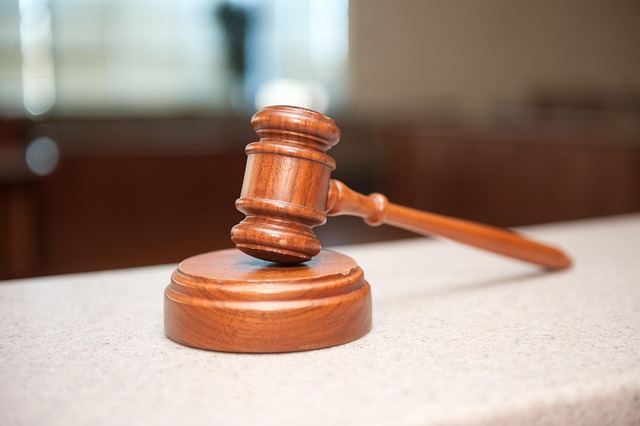RF Regulatory Agency investigations are crucial for upholding RF standards and prosecuting violations like unlicensed operation or signal interference. These inquiries meticulously gather and analyze evidence, using advanced tools like spectrum analyzers to establish criminal intent—a key for successful prosecutions. The Role of Evidence in Establishing Criminal Intent significantly influences outcomes, with high success rates underscoring the effectiveness of these investigations. Businesses must adhere to regulations to avoid scrutiny and potential legal consequences.
RF Regulatory Agency investigations are crucial in ensuring compliance with wireless communication standards. This article explores the intricacies of these inquiries, from understanding the process to the legal framework governing them. We delve into how forensically sound evidence collection plays a pivotal role in establishing criminal intent in RF cases. By examining past investigations, we uncover valuable lessons that highlight the significance of robust evidence gathering practices in navigating complex regulatory landscapes.
- Understanding RF Regulatory Agency Investigations
- The Process of Gathering Evidence for RF Compliance
- Legal Framework and Criminal Intent in RF Cases
- Role of Forensically Sound Evidence Collection
- Lessons Learned from Past RF Regulatory Investigations
Understanding RF Regulatory Agency Investigations

RF Regulatory Agency Investigations play a critical role in ensuring compliance with radio frequency (RF) standards and preventing unauthorized or harmful RF emissions. These investigations are triggered by suspected violations, such as unlicensed operation, interference with other signals, or non-compliance with safety guidelines. The process involves a thorough examination of evidence to establish criminal intent, which is crucial for legal proceedings.
Evidence collection and analysis are key components in RF investigations. Regulatory agencies employ advanced techniques to detect and document RF emissions, including spectrum analyzers, signal detectors, and forensic tools. By examining the respective business operations, historical data, and technical records, investigators can build a compelling case against individuals or entities responsible for violations. An unprecedented track record of successful prosecutions highlights the effectiveness of these investigations in deterring future RF-related crimes and ensuring a safe, secure radio frequency environment.
The Process of Gathering Evidence for RF Compliance

The process of gathering evidence for Radio Frequency (RF) compliance is a meticulous task that forms a crucial aspect of RF Regulatory Agency investigations. It involves a systematic approach to uncover violations and ensure adherence to established standards. Evidence collection begins with comprehensive documentation, including technical reports, design specifications, and test results. These documents provide the foundation for understanding the product’s or system’s performance and potential non-compliance.
The Role of Evidence in Establishing Criminal Intent is significant in RF investigations, especially when dealing with white-collar and economic crimes. Accurate and relevant evidence can demonstrate deliberate disregard for regulations, leading to successful prosecutions. This process often involves intricate analysis of data logs, network traffic, and device interactions. By correlating this data, investigators can reconstruct events, identify anomalies, and pinpoint potential violations. Ultimately, the strength of the evidence presented in court could determine the outcome of jury trials, ensuring justice and maintaining the integrity of RF communication systems.
Legal Framework and Criminal Intent in RF Cases

In RF Regulatory Agency investigations, understanding the legal framework is paramount as it dictates the course of action and potential outcomes. The onus of proving criminal intent lies heavily on the regulatory agency, which must navigate a complex web of laws and regulations to establish guilt beyond a reasonable doubt. This involves meticulously gathering and presenting evidence that directly links the accused entity or individual to any violation.
The role of evidence in establishing criminal intent is crucial, especially in RF cases where technicalities and nuances can significantly impact the outcome. An unprecedented track record of successful prosecutions across the country underscores the importance of thorough investigations and robust legal strategies. Agencies must ensure their respective business operations adhere to regulations to avoid becoming subjects of such inquiries.
Role of Forensically Sound Evidence Collection

The role of forensically sound evidence collection is paramount in RF Regulatory Agency investigations, as it forms the bedrock upon which criminal intent is established. This meticulous process involves gathering and preserving data from various sources—from digital devices to network logs—to ensure its integrity and admissibility in jury trials. Effective evidence collection not only helps in uncovering potential violations but also plays a crucial role in avoiding indictment by providing clear, compelling proof.
Forensically sound practices ensure that the evidence collected is reliable and unaltered, allowing investigators to reconstruct events accurately. This is particularly important in the complex landscape of radio frequency (RF) technology, where data can be manipulated or hidden. By employing specialized tools and techniques, investigators can uncover hidden files, track unauthorized transmissions, and correlate activities, thereby strengthening their cases and enhancing the chances of successful prosecutions.
Lessons Learned from Past RF Regulatory Investigations

Over the years, RF Regulatory Agency investigations have left a trail of valuable lessons that have significantly shaped the approach to enforcing wireless communication laws. These inquiries, often involving high-stakes cases, have underscored the intricate balance between regulating technology and fostering innovation. One pivotal lesson revolves around the role of evidence in establishing criminal intent. Solid, irrefutable evidence is not just crucial for securing convictions; it plays a pivotal role in avoiding indictment and mitigating potential consequences for individuals and organizations.
Past investigations also revealed the complex interplay between regulatory bodies and the philanthropic and political communities. This has prompted a greater emphasis on transparent processes that uphold the integrity of the law while ensuring fairness. As these inquiries continue to evolve, learning from past experiences will remain paramount in navigating the dynamic landscape of RF regulations, particularly as technology advances and new challenges emerge.
RF Regulatory Agency investigations are crucial in ensuring compliance with radio frequency (RF) standards, especially in preventing potential criminal activities. By understanding the evidence gathering process and the legal framework involved, agencies can effectively navigate RF cases. The role of forensically sound evidence collection is pivotal in establishing criminal intent, as seen from past investigations. Thus, leveraging lessons learned and focusing on the importance of evidence, regulatory bodies can enhance their RF compliance oversight, deterring non-compliance and illegal activities alike.






